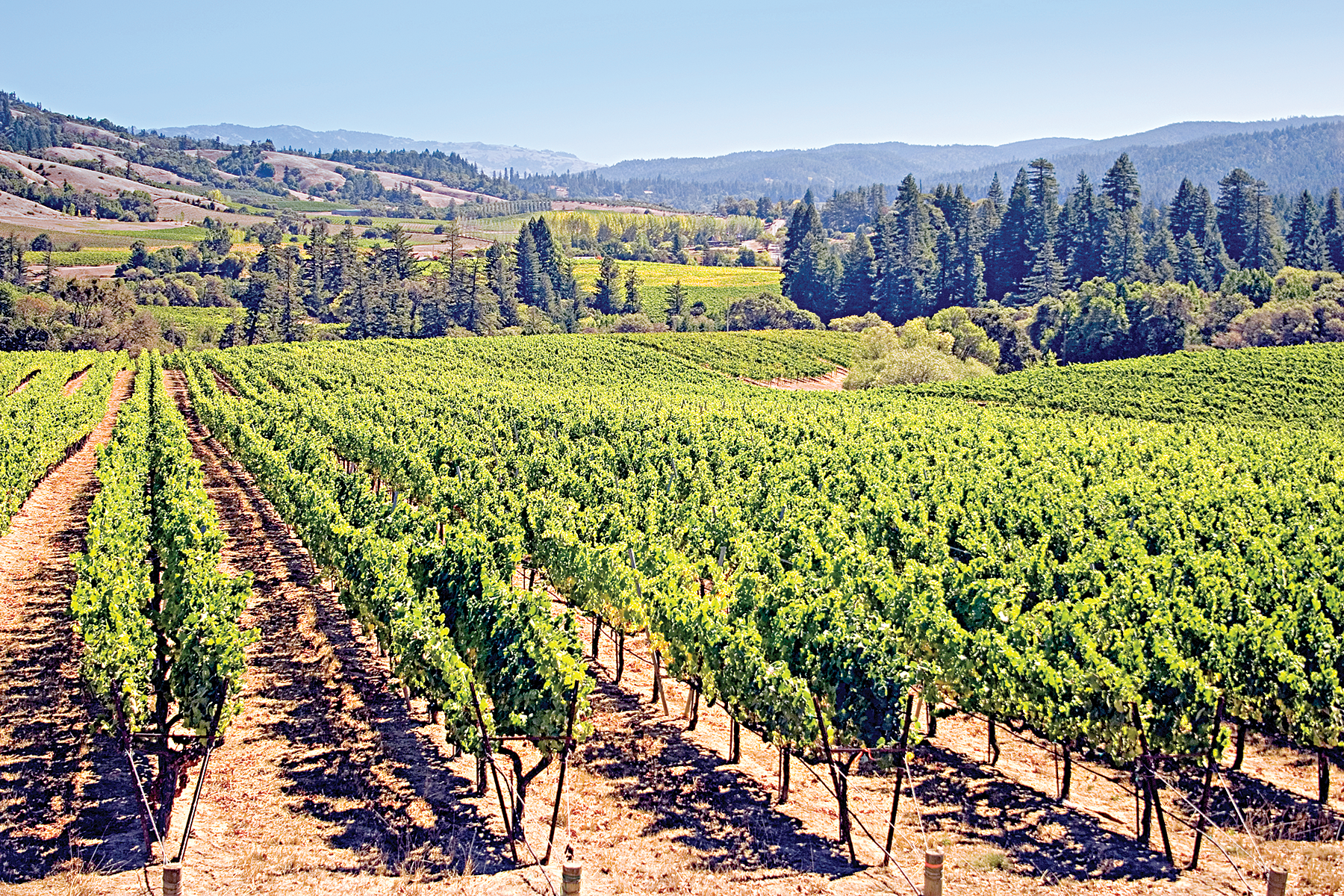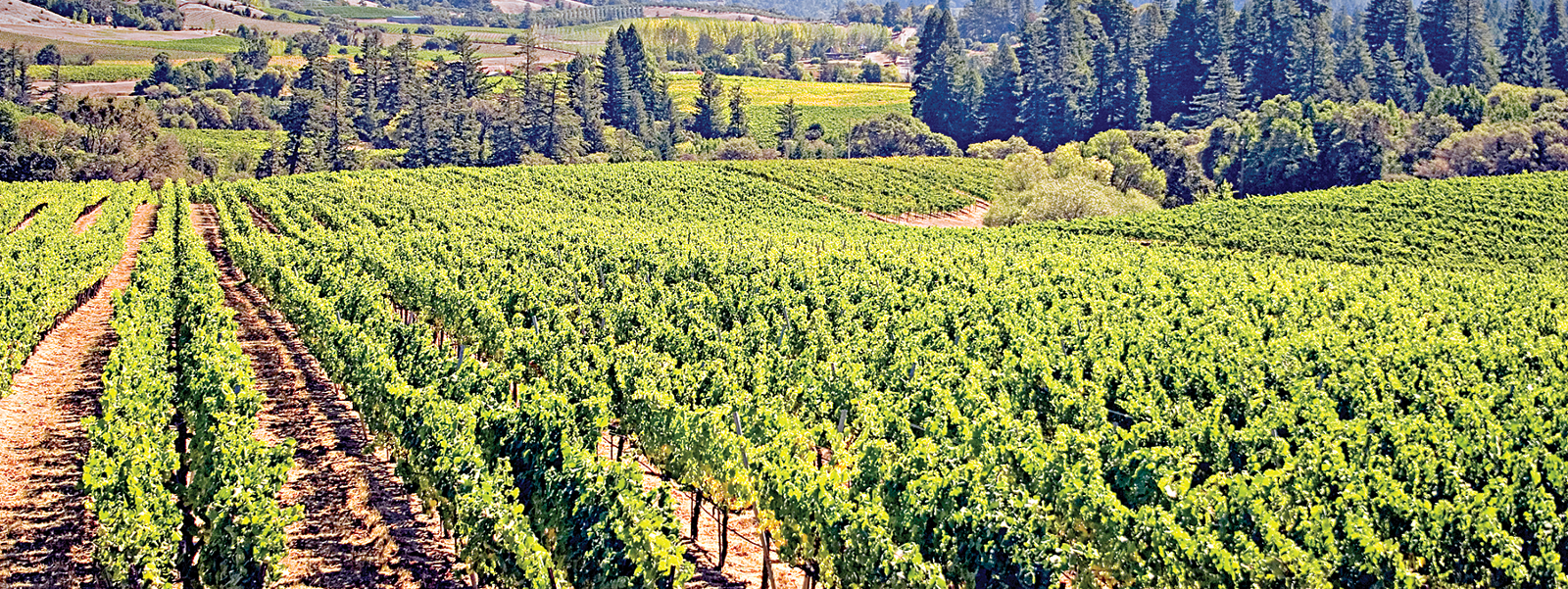Water order takes shape for North Coast vineyards

Winegrapes grow in Anderson Valley in Mendocino County. Vineyard growers in Mendocino and Sonoma counties say proposed water-quality regulations are costly and duplicate efforts by growers who participate in sustainability certification programs.

By Christine Souza
Winegrape growers in Mendocino and Sonoma counties say a proposed water-quality regulation establishes general waste discharge requirements for vineyards that are burdensome, costly and often duplicate work by growers participating in sustainability certification programs.
Rather than regulating all agricultural crops under one order—an approach taken by some other regions—Kari Fisher, senior counsel for the California Farm Bureau, said the North Coast regional board created a separate irrigated lands permit for all commercial vineyards regardless of size.
“The projections that the regional board put in their draft order underestimate the regulatory cost for growers,” Fisher said. “The requirements, such as those for turbidity monitoring, are going to be very costly given the many discharge points that growers have to monitor.”
Another issue, she said, is even growers with just a few acres fall under the definition of a commercial vineyard. “Vastly small growers are included under these regulations,” she said.
The North Coast is the last of the state’s nine regions to develop general waste discharge requirements as part of the state’s Irrigated Lands Regulatory Program. The purpose is to regulate runoff from irrigated agriculture to prevent discharges and protect surface water and groundwater.
In its June 30 proposed draft, the North Coast Regional Water Quality Control Board creates new monitoring and reporting requirements for nitrogen applications and removals and lays out paths to compliance for individuals or use of third-party programs to help farmers achieve the order’s objectives.
Fisher said the state’s 2018 adoption of an order revising agricultural requirements for the East San Joaquin River watershed was precedential and required other regional boards to update their irrigated lands programs.
Mendocino County winegrape grower Frost Pauli said, “The biggest single issue is the individual grower monitoring and reporting requirements.”
“Under the draft, every grower must do individual monitoring of surface turbidity and of groundwater for nitrates and chemicals,” he said. “If you have four or five domestic wells on a vineyard, you have to test every single one of them for nitrates, and you have to test for 20 chemicals.”
Pauli’s vineyards in Napa County fall under the irrigated lands program adopted by the regional water quality control board overseeing region 2 and the Napa River watershed. For vineyards in region 2, he said there are no individual grower monitoring requirements.
“(In region 2), it’s all representative monitoring done in a few locations to make sure that there’s not a problem, and if there is a problem, the result is to go upstream to find where the point source of that issue is,” Pauli said. “We’re saying, ‘Why can’t we be like region 2? It’s the same crop.’”
Other aspects of the North Coast region’s draft regulation that growers said are unreasonable include an annual “winterization” period Nov. 15 to April 1, when any ground-disturbing activity is prohibited. In addition, during this time growers are not allowed to drive into vineyards unless traveling on “all-weather” roads.
Pauli called that “nonsense,” saying it means growers may not access vineyards to do routine cultural practices for almost half the year, including during a critical time when vines go dormant. “This is going to be a huge problem,” he said.
The regulation includes a setback requirement alongside creeks.
Growers must have a natural barrier, and depending on the type of stream and where it is, the barrier determines what the setback is, Pauli said.
“The setback can be anywhere from 25 feet to 50 feet, depending on the condition of the stream, size and when it flows,” he added.
Pauli knows a small winegrape grower in Mendocino County who has an 11-acre vineyard that borders a creek. Because of the setback requirement, Pauli said, the grower estimates he would have to remove three or four vines at the end of every row to comply, losing one of his 11 acres.
Noelle Cremers, director of environmental and regulatory affairs for The Wine Institute, which represents California wineries, said many North Coast winegrape growers realize there is a need to adopt an order but suggested regulations be based on risk.
Cremers said growers who are low risk should have a simple process for compliance, while those who are higher risk should have higher standards.
“Then you’re putting costs on people that will have a real impact on the environment and not on those who are just doing all this reporting and it’s not really going to have any benefit,” she added.
People are having a difficult time understanding why all the nitrogen requirements apply to them, Cremers said, because nitrogen application rates are lower for winegrapes than other crops. She said the risk of contamination “is pretty much nil.”
The Russian River watershed, where just 10% of land is farmed in grapes, has been designated by the state as an impaired water related to sediment. Cremers noted that the regional board has not yet developed a Total Maximum Daily Load program plan, which involves studies that identify sources of sediment discharge in the watershed.
“Because the Russian River doesn’t have a TMDL, it feels like the regional board is asking vineyards to take on the role of monitoring for sediment for the entire watershed,” Cremers said. “Why are we being asked to undertake all of that monitoring? That should have been done through a TMDL process.”
Sonoma County Farm Bureau Deputy Executive Director Robin Bartholow said, “Many growers are already enrolled in sustainable farming programs and are engaging in best management practices that are required to be certified, so it does get a little bit frustrating when they’re asked to do additional reporting.”
Many winegrape growers in Mendocino and Sonoma counties are sustainably certified through the Fish Friendly Farming Certification program, recognized as a method of compliance for the irrigated lands regulatory program.
Through the Fish Friendly Farming program, Laurel Marcus, author of the program and science director at the California Land Stewardship Institute, said scientific staff work with farmers to evaluate all sources and potential sources of sediment and to inventory chemical use.
She said the program “provides the grower a blueprint for what they need to do to maintain water quality and not contribute pollutants to waterways.” In Sonoma County, 54,600 total acres are enrolled in the program, and 40,000 total acres are enrolled in Mendocino County.
Winegrape growers affected by the draft order are hopeful they can work with the regional board to meet the regulatory mandate and improve the order to make it more reasonable, Bartholow said.
In addition to the vineyard requirements, in January 2021, the state adopted new wastewater discharge regulations affecting wineries that apply winery process water to land for irrigation and soil amendment uses.
“We’re getting hit by all sides,” Pauli said of the regulations.
The North Coast Regional Water Quality Control Board scheduled a public workshop about the order this Friday and the public comment period was extended to Aug. 30. The board could adopt the order in December.
(Christine Souza is an assistant editor of Ag Alert. She may be contacted at csouza@cfbf.com.)




